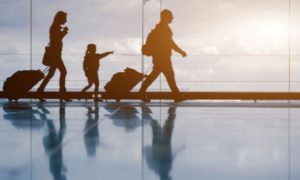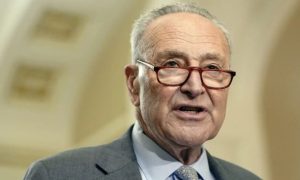SACRAMENTO — For the past six years, Laura Friedman’s workweek has begun with a short commute up to Northern California on Southwest Airlines.
“Every Monday morning, I fly to Sacramento,” said Ms. Friedman, a Democratic legislator from the Los Angeles area who leads the transportation committee in the State Assembly. “And every Thursday afternoon, I fly back to Southern California. There are usually a whole group of us on those flights.”
This week, while the Southwest meltdown ruined holiday vacations for travelers across the country, Ms. Friedman and countless Californians were left wondering what the disruptions would mean for the airline that has become the backbone of day-to-day travel in the nation’s most populous state.
Also Read – Travel nurses took high-paying jobs during Covid. But then their pay was slashed, sometimes in half.
Once singularly associated with Texas, Southwest is now an essential bridge across the north-south geographic divide in California, where white-collar workers, college students and families have come to rely on the airline the way New Yorkers depend on Amtrak or the Long Island Rail Road.
Southwest is California’s busiest airline, with some 800 flights scheduled on peak days, many of which ferry residents between Northern and Southern California. Despite mild winter weather, California’s medium-size airports suffered some of the worst cancellation rates in the nation over the past week because Southwest accounts for so much of their traffic.
“Southwest is almost the unofficial airline of California,” said Henry Harteveldt, an analyst based in San Francisco who covers airlines for Atmosphere Research Group.
In Texas, Hawaii, Alaska and Florida, analysts and policymakers say, this year’s travel fiasco has similarly underscored the perils of depending too heavily on planes in an era of climate change. As in California, commuters in Texas regularly rely on Southwest to travel across the state, and last week’s disruption stranded fliers from El Paso to Houston.
Also Read – Winter storm updates: Widespread freezing temperatures to continue through Christmas; deaths reported
For nearly 15 years, opponents of California’s high-speed rail project have pointed to cheap Southwest flights as a reason the state does not need the railway that was initially sold as a link between the San Francisco Bay Area and Southern California. Decades ago in Texas, the airline famously helped defeat a high-speed rail plan.
More than 2,900 Southwest flights were canceled across the country on Monday, with thousands more scrapped daily for the next three days, roughly 60 percent of its schedule.
Many Southwest passengers, told they might be stranded for days, scrambled to find tickets on buses, trains and other airlines. At one point this week, the only one-way ticket on short notice from Sacramento to Los Angeles was a first-class seat on Delta Air Lines for nearly $700 — several times more than passengers are used to paying on that leg.
Others made a beeline for the rental car offices and opted to endure the six to nine hours it normally takes to drive from Northern to Southern California, or vice versa.
The airline said in a statement on Thursday that it had stabilized its operations and that it planned to resume its full flight schedule on Friday “with minimal disruptions.” Only a few dozen Friday flights had been canceled by midday Thursday — “good news for everyone,” Mr. Harteveldt said.
“But just because the flights are operating doesn’t mean the customers will be there,” he added. “I think this event has weakened trust among travelers and done substantial damage to Southwest’s brand.”
Nowhere has that brand become more integral than in car-dependent California, where the Texas-based airline operates more flights than in any other place in the nation, including its home state. Southwest “carried more California travelers to, from and within California than any other airline,” according to the airline’s 2021 annual report.
Also Read – Extreme winter storm sabotages power, imperils travelers across U.S.
Inspired by California’s now-defunct Pacific Southwest Airlines, which pioneered intrastate discount air travel, Southwest started in 1967 as a way to ferry passengers between Texas cities, in an era when some airlines tried to keep their travel within state lines to avoid federal oversight and costs. It has steadily grown to become one of the nation’s four largest carriers serving routes across the country. Until its current troubles, it was known mostly for its low fares, abundant flights, convivial — and occasionally musical — flight attendants and general punctuality.
Southwest remains a minor player on California’s busiest intrastate route between San Francisco and Los Angeles, but it overwhelmingly dominates air travel at seven of California’s 10 busiest airports. The airline accounts for 68 percent of total seats for sale on flights within California, said Mike Arnot, a spokesman for Cirium, an aviation analytics company, and serves tens of millions of passengers annually.
While it barely has a toehold at San Francisco International Airport, Southwest accounted for 80 percent of traffic at nearby Oakland International Airport and 63 percent at San Jose International Airport in the 12-month period ending on Sept. 30, according to the Bureau of Transportation Statistics.
And it is embedded in the state’s culture. Hollywood spoofs it. Jimmy Kimmel name-checks it in monologues on his late-night show. Gray Davis, the governor of California who was recalled by voters in 2003 and replaced by the actor Arnold Schwarzenegger, was a frequent Southwest flier who relied on the airline to travel from his home in Los Angeles to Sacramento. (Mr. Schwarzenegger instead relied on private jets.)
Casey Hultin, a traveling trial attorney who lives in Oakland, said she typically flies Southwest for work twice a week to Southern California. Southwest offers so many flights between California airports, she said, that she can hop on an earlier flight if she finishes court early, or switch her destination from, say, Long Beach to Ontario if the trial location changes at the last minute.
“I cannot think of another airline I could do this on,” Ms. Hultin, 33, said. “The other people who do what I do have private planes. They’re not flying some other airline — it’s Southwest or private planes, because nothing else will provide you with the flexibility.”
Ms. Hultin said the weekday Southwest flights between the Bay Area and the Los Angeles region were filled with people like her.
“There are a ton of us on these flights that are essentially commuting between Northern and Southern California,” she said.
State legislators from Southern California fly Southwest so often that an ecosystem has evolved around their schedules, with lobbyists booking flights at the beginning or end of the week in the hope of sitting next to a lawmaker. Southwest accounts for more than half of traffic at Sacramento International Airport.
“The Legislature is totally dependent on Southwest functioning,” said Tom Umberg, a Democratic state senator. He has commuted to the state capital for years from Orange County and says the airline is the only real option for his 450-mile commute, other than Interstate 5, a major north-south highway that runs through California.
Also Read – Ask the Pediatrician: How can I decorate for the holidays safely with young children?
Ms. Friedman said she would face a seven-hour drive if she could not catch her usual Southwest plane from Burbank, which she has come to regard as “a giant flying bus.”
“I enjoy it,” she said. “I like there’s no first class, and everyone is there, eating the same Chex Mix or whatever it is for breakfast.”
A Democrat, Ms. Friedman said she would usually sit with a Republican senator from another part of Los Angeles County, and use the flight to catch up on work, at least when the plane was not filled with school groups on field trips to Sacramento. This recent episode, however, has been sobering, she said.
“We don’t have a good statewide mass transit system in California, and we need to do more to support our rail network,” she said, planning for the Legislature’s return next week to Sacramento. She has a couple of bills in mind for that, she added — assuming that she makes it there.







































